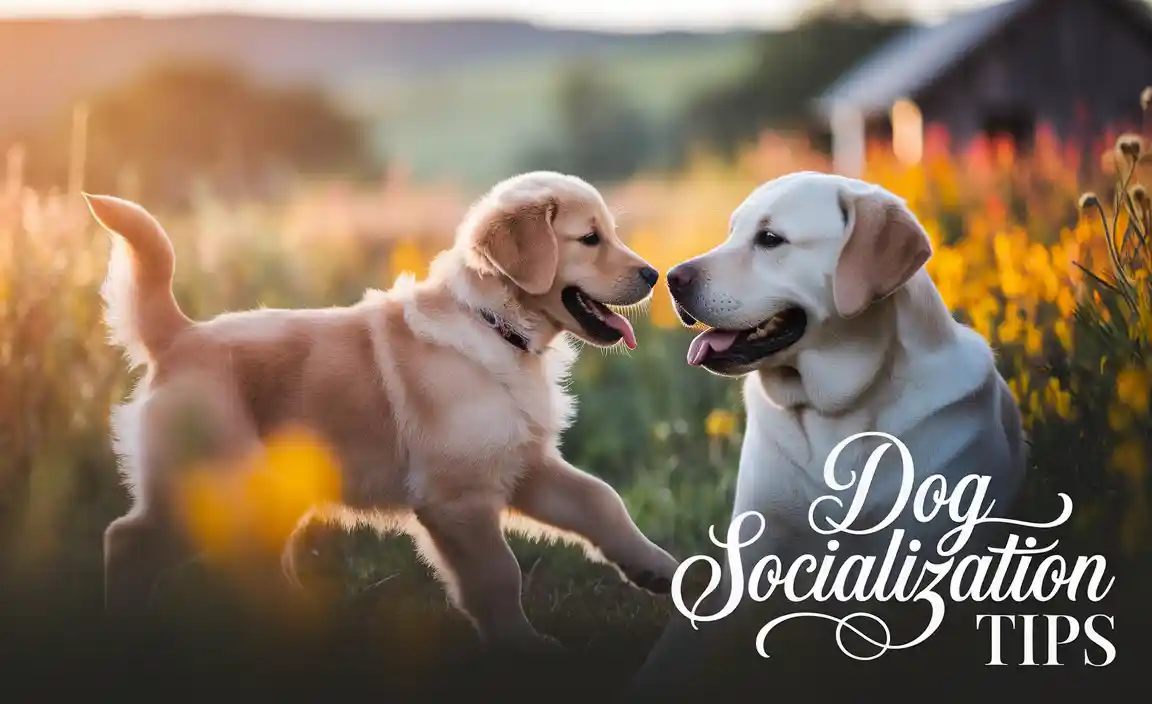Dog socialization tips at home are crucial for raising a well-adjusted canine companion. Far from being just about meeting other dogs, proper socialization encompasses exposing your puppy or even an adult dog to a variety of sights, sounds, people, and experiences in a positive and controlled manner. Doing this effectively from an early age can prevent a lifetime of anxiety, fear, and behavioral issues. Fortunately, a significant portion of this vital development can occur within the comfortable and familiar environment of your own home.
The formative weeks of a puppy’s life, typically between 3 and 16 weeks, are a critical window for socialization. During this period, they are naturally curious and receptive to new stimuli. However, this doesn’t mean overwhelming them. The key is gradual, positive exposure. For adult dogs experiencing their first socialization or those with previous negative experiences, a similar, albeit more cautious, approach is still highly effective. The goal is to build confidence and create positive associations with the world around them.
The Foundation: Creating a Safe and Positive Home Environment
Before introducing your dog to specific socialization exercises, ensure your home itself is a sanctuary. This means having a secure space where they can retreat, such as a crate or a comfortable bed. This safe haven is paramount for building trust and reducing stress. When they feel secure in their personal space, they are more likely to approach new experiences with a calmer demeanor.
Your home environment should also be a place of predictable routine. Regular feeding times, potty breaks, and play sessions help your dog understand what to expect, which further reduces anxiety. This predictability is the bedrock upon which you can build more adventurous socialization efforts.
Harnessing Everyday Sounds and Sights for Dog Socialization
One of the easiest ways to implement dog socialization tips at home involves leveraging the sounds and sights that are already part of your daily life. Start by introducing your puppy to common household noises gradually. This could include the vacuum cleaner, the washing machine, a door slamming, or even the television. Initially, play these sounds at a low volume while your dog is occupied with something they enjoy, like eating or playing with a favorite toy. As they become comfortable, slowly increase the volume. If your dog shows signs of fear, such as cowering, tucking their tail, or trying to escape, immediately reduce the intensity and try again later with a lower volume.
Similarly, expose them to different visual stimuli. Let them observe people walking by the window, the mail carrier approaching the door, or even passing cars. Again, the key is positive association. Offer treats and praise when they remain calm and curious. You can also introduce them to different textures underfoot. Let them walk on carpet, hardwood floors, tile, and even a safe outdoor surface like a patch of grass in your yard. This helps prevent aversions to different ground coverings later on.
People Power: Integrating Visitors and Family
Introducing your dog to different people is a cornerstone of socialization. Start with familiar family members or close friends who are enthusiastic about dogs and understand how to interact with them. Instruct your visitors to let the dog approach them, rather than immediately reaching out to pet. They can toss treats or engage in gentle play. Avoid overwhelming the dog with too many people at once, especially in the beginning. When they are comfortable with a few trusted individuals, you can gradually expand the circle of visitors.
Crucially, ensure that all interactions are positive. If a visitor makes your dog uncomfortable, it’s important to intervene and give your dog space. For puppies, this is also an opportunity to teach them about gentle handling. Allow visitors to offer calm pets and scratches, but always monitor your dog’s body language for signs of stress.
Introducing New Objects and Experiences Safely
Beyond sounds and people, dog socialization tips at home can involve introducing novel objects. This could be anything from an umbrella to a bicycle to a baby stroller. Present these items in a non-threatening way. Allow your dog to investigate them at their own pace. You can even place treats around the object to encourage positive exploration.
Simultaneously, think about introducing different forms of play. Beyond fetch, consider puzzle toys, tug toys (with rules about when to release), and scent games. These activities not only provide mental stimulation but also help your dog learn to interact with new objects and engage in different types of behaviors, all within a safe and controlled environment.
The Importance of Calm and Gradual Progression
Never force your dog into a situation they find frightening. This will only create negative associations and set back your socialization efforts. Instead, practice patience and celebrate small victories. If your dog shows even a flicker of curiosity towards something new, reward them enthusiastically. The goal is to build their confidence incrementally.
Remember that socialization is an ongoing process, not a one-time event. Even well-socialized dogs benefit from continued positive exposure to new experiences throughout their lives. By diligently applying these dog socialization tips at home, you are investing in a happy, confident, and well-adjusted canine companion for years to come. Your home is the perfect starting point to shape their understanding of the world, ensuring they can navigate it with courage and joy.
Meet Elyse Colburn, the devoted canine companion and storyteller behind the enchanting world of “Tales, Tails, and Adventures Unleashed.” A passionate dog enthusiast with a heart full of paw prints, Elyse Colburn shares heartwarming tales and insightful adventures, celebrating the joy, loyalty, and endless antics that make every dog a true hero. Join Elyse Colburn on this tail-wagging journey, where every post is a love letter to our four-legged friends.





